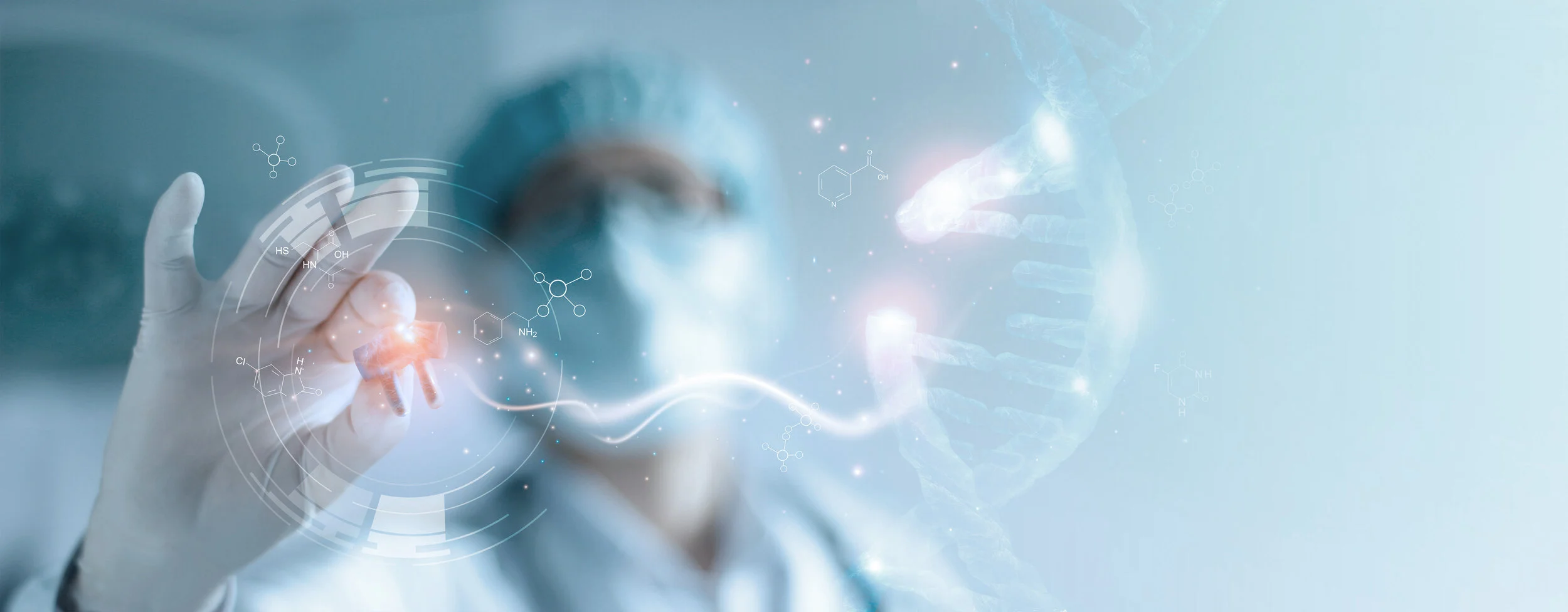
The Science
What is ALS?
ALS, or amyotrophic lateral sclerosis, is a progressive neurodegenerative disease that affects nerve cells in the brain and the spinal cord. Motor neurons reach from the brain to the spinal cord, and then to the rest of the body. The progressive degeneration of motor neurons caused by ALS eventually causes them to die. When the motor neurons die, the ability of the brain to initiate and control muscle movement is lost. With voluntary muscle action progressively affected, people may lose the ability to speak, eat, move, and even breathe.
What about Genetic ALS?
ALS can be classified into two different categories, sporadic and familial (genetic). Sporadic ALS, which is the most common form of the disease in the U.S., accounts for over 90 percent of cases, and can affect anyone. Familial ALS (FALS) accounts for less than 10 percent of all cases in the U.S. Familial ALS means the disease is inherited. In those families that carry a genetic ALS mutation, there is a 50% chance that each child will inherit the gene mutation, and may develop the disease.
What is CHCHD10?
By definition, CHCHD10 is a gene that encodes a mitochondrial intermembrane protein, which is involved with mitochondrial cristae morphology and oxidative phosphorylation. For our purposes though, and to keep things simple, all we really need to know is that mutations in this gene can cause frontotemporal dementia and ALS. To date, there has never been a cure for any form of ALS, whether sporadic or inherited.
In the case of the Weber family, a deformity in the R15L phenotype of the CHCHD10 gene has led to an inherited (familial) strain of ALS. Of Art and Annie Weber’s nine children, one has already passed from this disease, and five others carry the mutated gene. In the next generation there are 18 children at risk, the numbers just go up from there. If we were to track this disease out to distant cousins and relatives, the numbers would just keep getting higher.
What’s the Plan?
Over the past 20+ years, we have been hard at work uncovering our gene mutation and looking for treatments and cures. We’ve done our own large fundraising events, worked directly with the ALS Association, and even spoken at the Washington DC Advocacy for ALS. We’ve also partnered with top rated researchers, laboratories, and clinics to uncover whatever we could about this disease, all the while donating samples for them to perform their research.
Due to recent advances, new technologies and methodologies have been uncovered that may provide an effective treatment for this type of ALS and other genetic forms of ALS. Based on extensive evaluative measures, we believe that the most promising of these methods is the use of Antisense Oligonucleotides (ASOs) to “silence” the mutated gene.
What is Gene Silencing?
Gene silencing is the regulation of gene “expression” in a cell to prevent the expression of a certain gene. Gene silencing is often used in research; however, methods used to silence genes are being increasingly used to produce therapeutics to combat cancer and neurodegenerative disorders such as ALS.
Gene silencing is often compared to gene knockdown. When genes are silenced, their expression is reduced. In contrast, when genes are knocked out, they are completely erased from the organism’s genome and, thus, have no expression. Gene silencing is considered a gene knockdown mechanism since the methods used to silence genes generally reduce the expression of a gene by at least 70% without completely eliminating the gene.
What are Antisense Oligonucleotides (ASOs)?
Antisense Oligonucleotides (ASOs) were discovered in 1978 by Paul Zamecnik and Mary Stephenson. “Antisense” means it is complementary to a messenger RNA (mRNA) strand, and therefore can bind to it. “Oligo” means ‘small,’ because ASOs are made up of relatively few (generally less than 25) nucleotides. Effectively, an ASO is a small string of DNA or RNA letters that can stick to the mRNA. While they act on diseases, ASOs are not considered ‘gene therapy’ because they only make contact with RNA, not DNA.
Companies like Ionis Pharmaceuticals have spent decades developing ASOs that target the brain and spinal cord and can correct mutated genes that lead to motor neuron death. Several Ionis ASOs have already shown promise in effectively treating familial forms of motor neuron diseases.
Doctors Manfredi and Kawamata have already begun collaborating with Ionis, who have made a series of CHCHD10 ASOs that they are now testing to see which ones knock down the gene most effectively!
The Research
Dr. Giovanni Manfredi, a neurologist at Weill Cornell, has developed an extensive program to study CHCHD10 mutations in his lab, and is very enthusiastic about working with the Weber family and scientific collaborators to identify therapies for CHCHD10 ALS and other diseases caused by mutations in this gene. Doctor Manfredi’s group has already developed several mouse models expressing CHCHD10 mutations which they will use to test potential therapies targeted at treating CHCHD10 ALS and other similar genetic mutations.
The Final Word
Based on our current understanding of the role of the CHCHD10 gene, we believe that this gene can be silenced completely without harmful effects, making this a potentially curative approach to genetic ALS treatment. It is our hope that these methods can be applied toward treatment of this, and other genetic forms of ALS, and potentially even transcribed to develop treatments for sporadic ALS and frontotemporal dementia.
Together, with your help, we can develop and test new therapies for ALS, and bring an end to this terrible disease.

